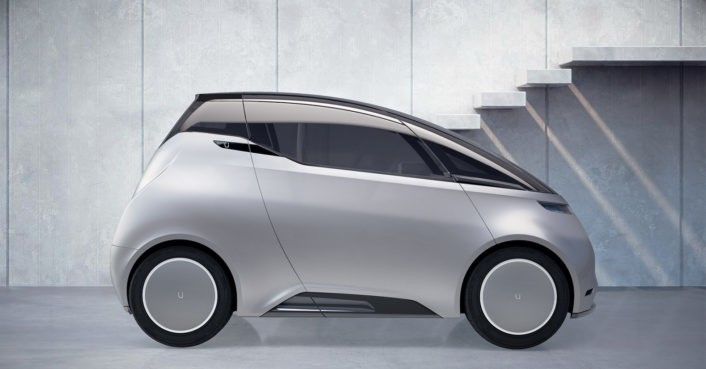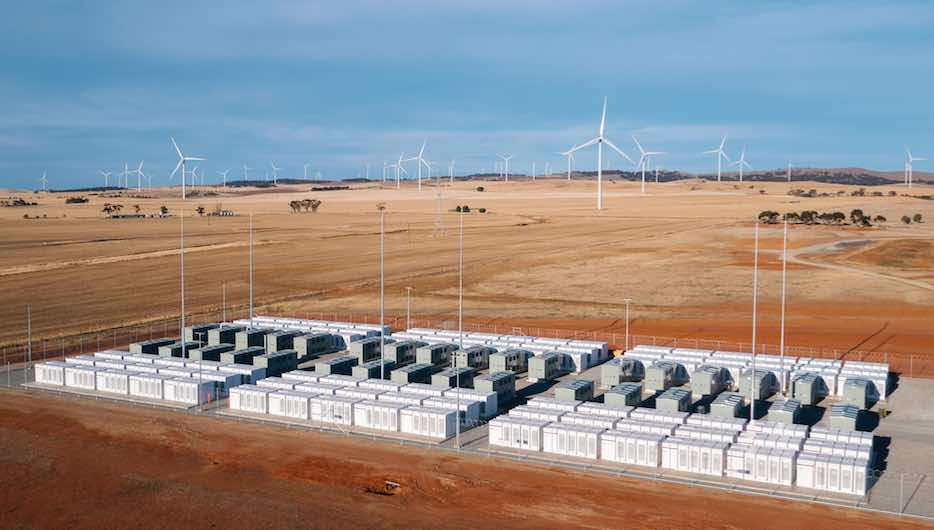Uniti is offering their electric car with five years of free electricity from solar power for Swedish customers thanks to a partnership with E.ON.


Uniti is offering their electric car with five years of free electricity from solar power for Swedish customers thanks to a partnership with E.ON.

China is now the proud owner of the world’s first all-electric cargo ship and has already put the vehicle to use.
As reported by China Daily, the 2,000-metric-ton ship was launched in the city of Guangzhou last month and runs in the inland section of the Pearl River.
Constructed by Guangzhou Shipyard International Company Ltd, it can travel 80 kilometres (approximately 50 miles) after being charged for two hours. As noted by Clean Technica, two hours is roughly the amount of time it would take to unload the ship’s cargo while docked.


by Tracey Follows, Founder/Director of the Female Futures Bureau
Jennifer Gidley is a former President of the World Futures Studies Federation (2009−2017), a UNESCO and UN partner and global peak body for futures studies scholarship, she led a network of hundreds of world leading futures scholars and researchers from around the globe. An adjunct Professor at the Institute for Sustainable Futures, UTS in Sydney, futurist, author, psychologist and educator, Jennifer is a prolific author of dozens of academic papers, serves on several academic boards, and most recently authored Postformal Education: A Philosophy for Complex Futures (Springer, 2016) & The Future: A Very Short Introduction (Oxford, 2017).
Tracey: I spoke to Jennifer about her perspective on Female Futures.
One of the issues we discuss a lot at The Female Futures Bureau is why more female futurists don’t have a higher profile. And Jennifer agrees that it’s not because they aren’t around:
“I actually believe there are a large number of female futurists globally, and probably always have been. I would suggest that there are as many women involved in futures studies and foresight work as there are men…”

“The attention of architects and designers is radically improving life on water. A new book “Rock The Boat”, out now from Gestalten, explores their work, and shows that “aquatecture” isn’t all portholes and painted timber, but rather modern, innovative and resourceful.”

Poverty rates have fallen faster in the past 30 years than at any other time on record. The UN wants extreme poverty to disappear by 2030. We assess the data to see if this is achievable.
Click here to subscribe to The Economist on YouTube: http://econ.st/2AfBchr
It is estimated that somebody escapes extreme poverty every 1.2 seconds. According to the World Bank, anyone on less than $1.90 per day is living in extreme poverty unable to afford basic food, clothing, healthcare and shelter.
Absolute poverty rates have fallen faster in the past 30 years than in any other time on record. This is a remarkable achievement but the task of taking people put of the worst poverty remains a huge challenge. The impressive fall is the result of changes in just two countries, China and India.
In the 1980s the majority of people in both of these countries were living in extreme poverty. But now the share of the poorest has fallen to 21% in India, and less than 2% in China.
Increased productivity in farms and a mass migration from poor rural areas to the booming cities enabled many Chinese and Indian people to better their lives. Asia is moving into a new phase but can other parts of the world copy their model of moving people to factory jobs in cities?

Just need 400 billion and 1.2% of the land area.
Desertec continues in a smaller form; they’re still building power plants in Morocco to supply the local energy needs of that country. Perhaps a ground-up approach, where MENA countries increase their own solar production in the desert before becoming net exporters, will provide the solution. This project is not the first wildly ambitious scheme to provide for the world’s energy needs that has stalled; historians remember Atlantropa, a scheme to dam the Strait of Gibraltar and use it for hydroelectric power that had some interest in the 1920s.
Yet the prospect remains tantalizing. Surely, when only a tiny fraction of the Earth’s surface need be devoted to energy production to provide us with more power than we could ever dream of consuming, we won’t wreck the planet by getting that energy through dirty and dangerous means. To starry-eyed idealists, it must seem equivalent to being on a raft in a lake full of drinking water—and choosing instead to swig from a bottle of seawater in your backpack. Solar power in the world’s deserts is one of the few feasible, renewable ways of providing energy on the scale we currently demand as humans. Someday, we will make better use of the abundant energy from the sun. We’ll have to.
Image Credit: Harvepino / Shutterstock.com

SENS Research Foundation co-founder Aubrey de Grey believes in a world in which we no longer age. At a London event, he explained that he believes the first person who will live to be 1,000 has already been born, and we’ll solve this “aging problem” within 20 years.
Aging has plagued biological organisms since life first began on planet Earth and it’s an accepted and universally understood part of life. Sure, things like climate change pose significant threats to society, but aging will almost certainly still exist even if we ever manage to stop damaging our environment.

The Tesla big battery – the world’s biggest lithium-ion battery storage installation to date – was officially switched on in South Australia on Friday, a day after it had already demonstrated its value by injecting energy into the grid during the previous day’s afternoon peak.
South Australia premier Jay Weatherill, whose government has provided the subsidy for the battery to be built on the grid with the largest penetration of wind and solar anywhere in the world, described it as a “landmark moment”.
“This means that, for the first time, clean and affordable wind energy can be dispatched to the grid 24 hours a day, 7 days a week, whether the wind is blowing or not, improving system reliability,” Weatherill said.
